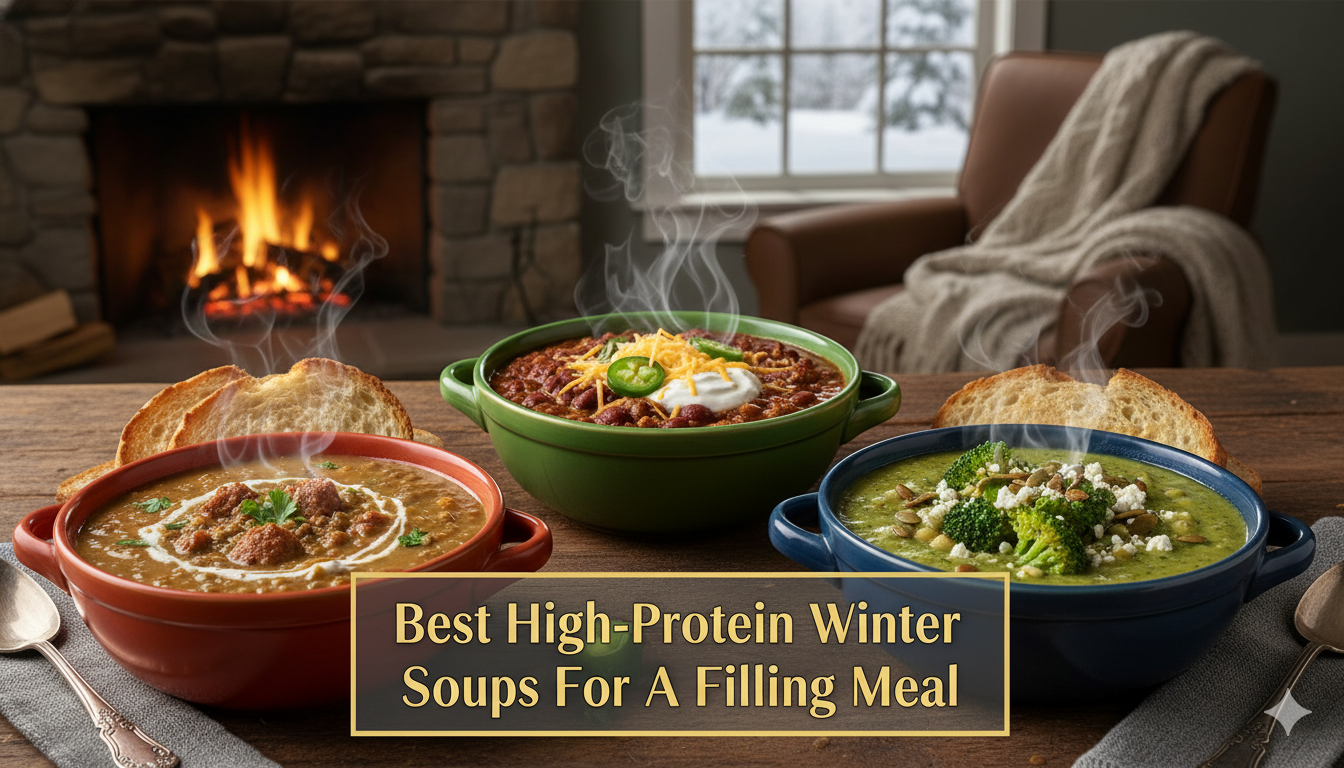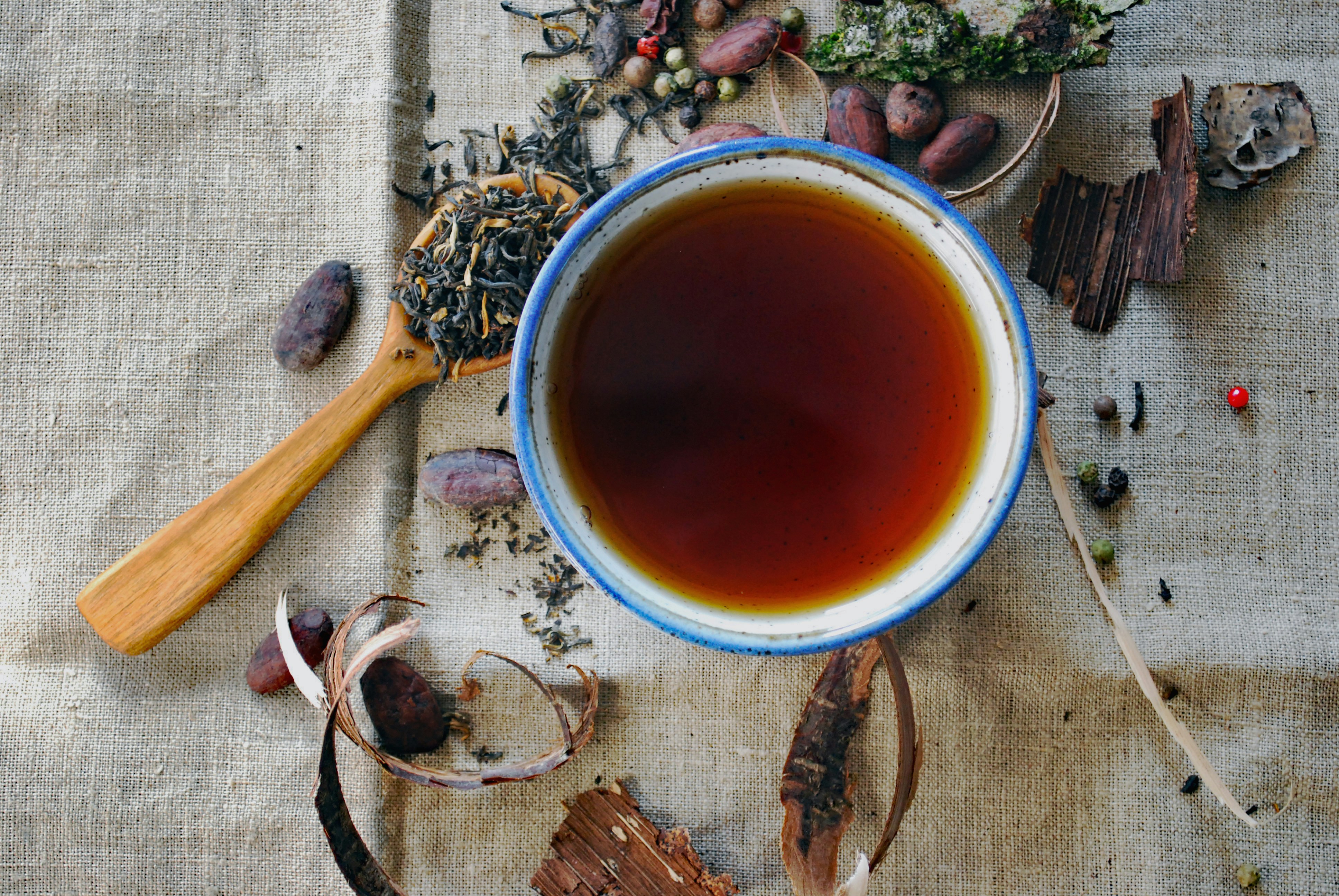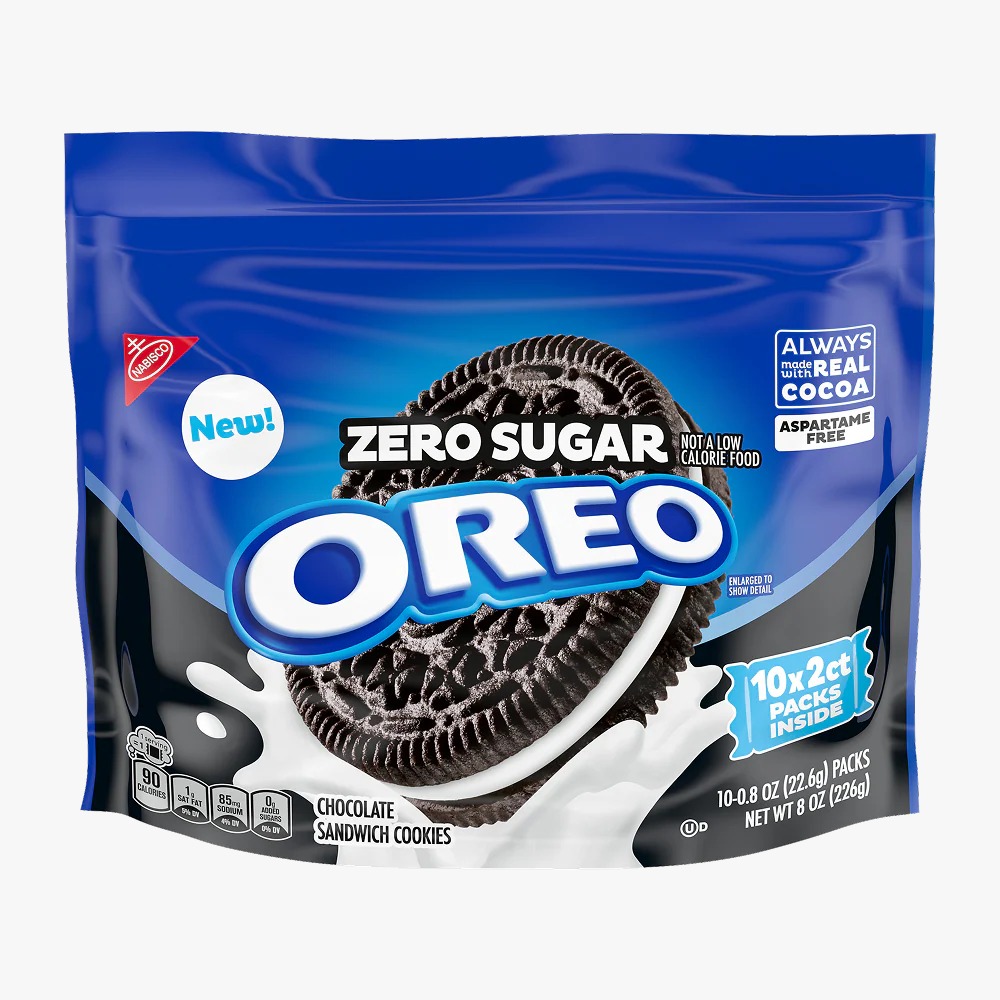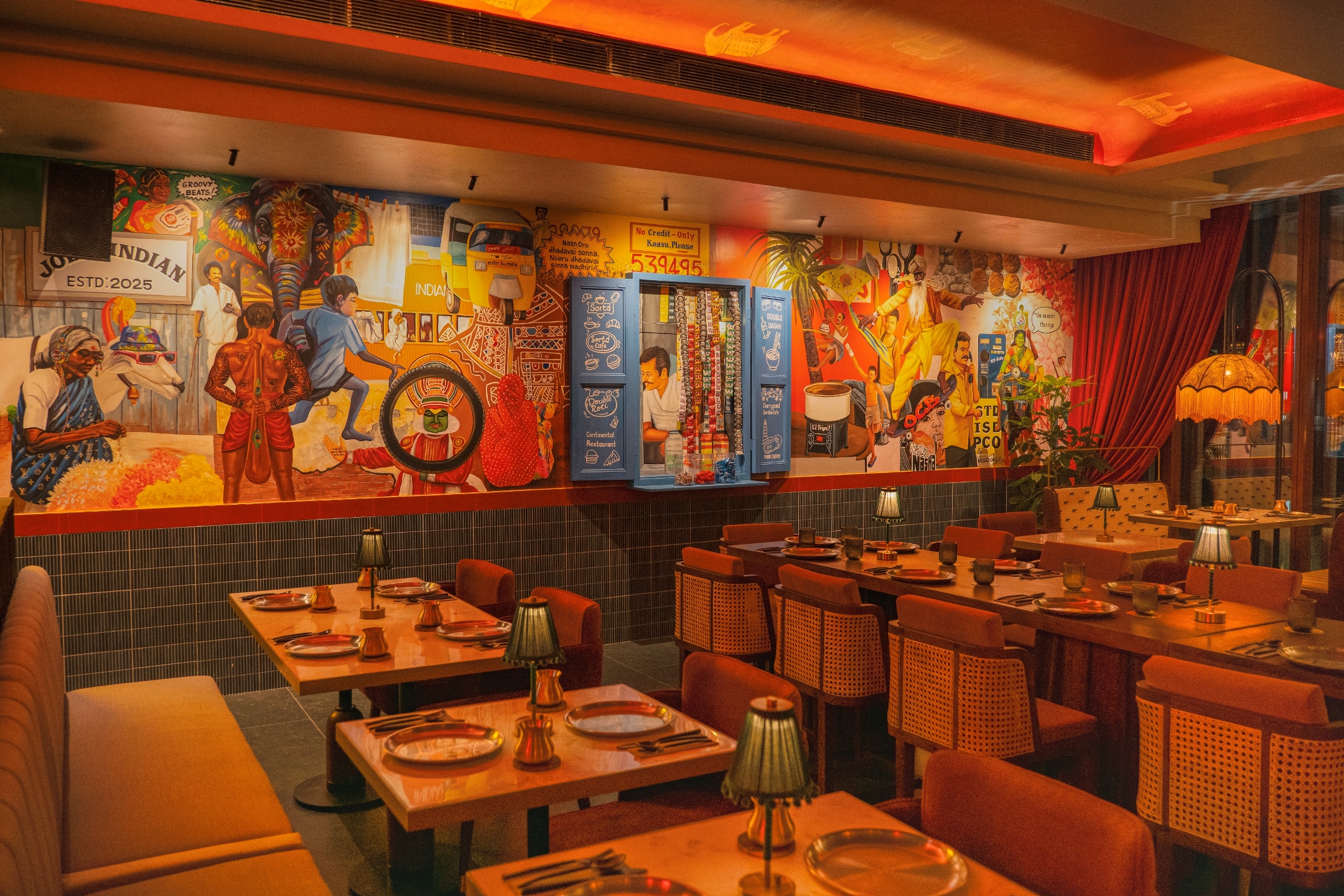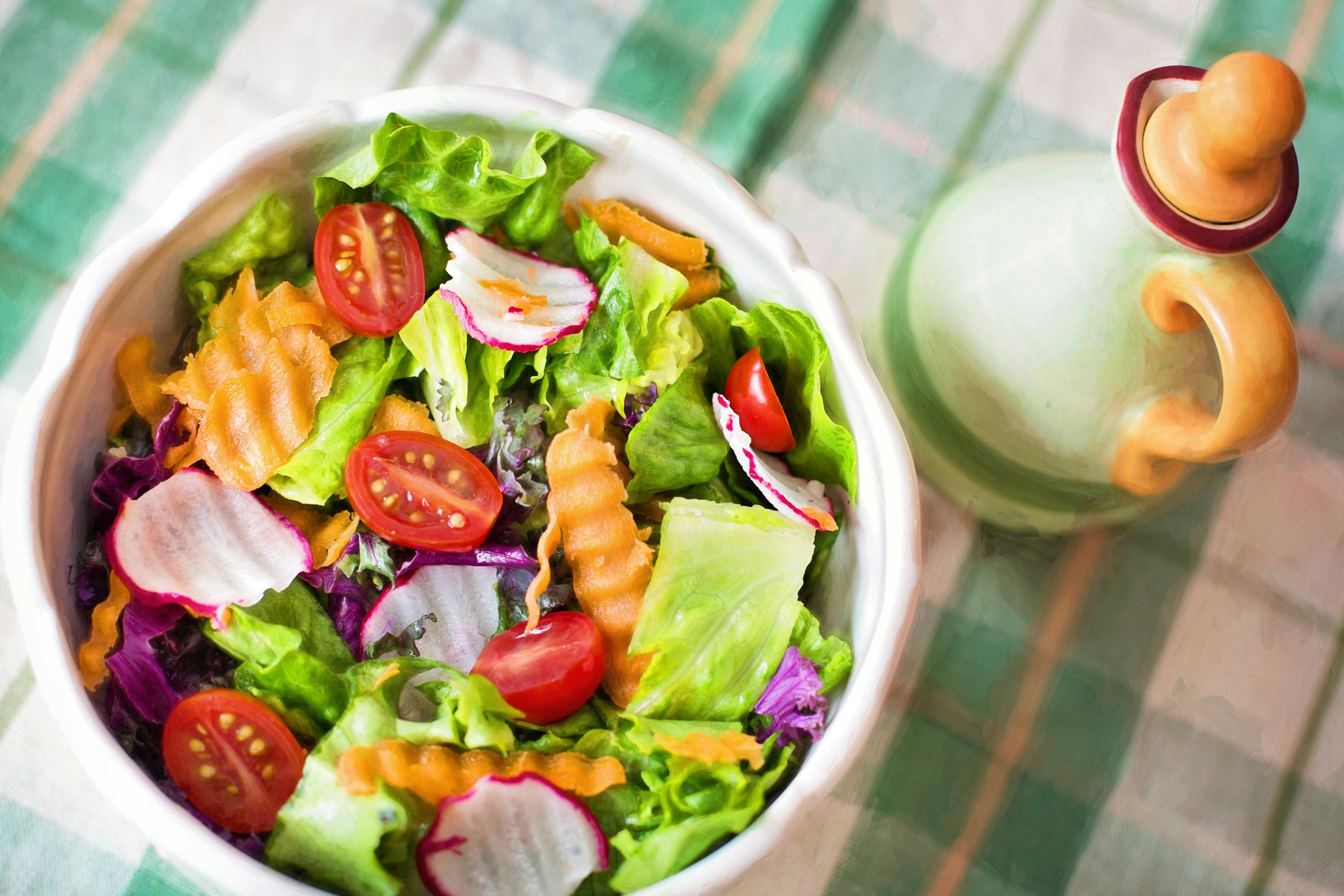The holidays are almost over, but the cold weather provides an excellent excuse to keep the sensory memory of Christmas alive just a little longer with a warming glass of mulled wine
Across the boundless east we drove,
Where those long swells of breaker sweep
The nutmeg rocks and isles of clove.
Tennyson
Mulled wine is one of my winter highlights; the welcoming warmth of a glass of spiced wine after a long walk in the cold is just wonderful. At its best, mulled wine brings the smells and thoughts of Christmas flooding back whatever the season. At its worst, however, it is sickly sweet, acidic and inconsistent from batch to batch. With this in mind I decided to fix on a reliable recipe that would remind me of Christmas, turning to history and the chemistry of flavour for inspiration.
The origins of mulled wine are not difficult to trace. Herbs and spices have been used for centuries to cover the flavours of spoilt food and drink. Wine was (and is) a mocker of man's efforts, taking every opportunity to deviate from expectations and "go off". Spiced wine was, to paraphrase the American poet Marianne Moore, " ... better, I think, than an embittered whine". The Victorians seem to have popularised mulled wine in the UK. Charles Dickens writes of a spiced wine called "Smoking Bishop" and later Mrs Beeton describes using spices to "mull wine".
Spices not only hide spoiled flavours but they can also transform foods into multisensory experiences. When we eat, our senses come alive: our eyes and ears anticipate, our sense of touch searches out cold, hot, rough or smooth, our smell and taste combine to give us flavour. Our flavour senses are complex analytical instruments - chemical sensors of incredible sensitivity - and spices can give them a real workout.
Taste buds provide us with the sensation of sweet, salt, sour, bitter and umami; tastes that are hardwired from birth. But this only provides about 20% of the flavour experience, the rest coming from smell. While our tongue has about 9,000 taste buds, we have around 5-10m receptors capable of detecting smell. When spicy food enters our mouths, volatile aroma molecules are released. These are carried up into the nose to the olfactory sensory cells, which fire in response to the shape and vibration of the aroma molecules, sending electric impulses to the brain via a complex system of nerves and membranes. These impulses form what is known as a "smell image" in the forebrain on the olfactory bulb. This smell image then combines with taste information in the orbitofrontal cortex to form the perception of flavour and define the desirability of food.
It has been suggested that this smell image can also become an addressable memory linked with other senses and emotions. Smell is the only human sense that bypasses the brain's switchboard, the thalamus, to connect directly to the limbic regions, which are the emotional centre of the brain. So, for example, the feelings of excitement and anticipation we feel at Christmas become associated with our smell image of Christmas.
If we can create a mulled wine that resembles some portion of this smell image, we should be able to bring back some of those happy emotions as we make it and drink it.
Step 1- Picking your wine
Even though wine is nothing more than an acidic, aqueous solution of ethanol with various low-level impurities, it must form the backbone of our drink. Luckily for us the low-level impurities include the nearly 1,000 different compounds that make wine so great. These compounds arise from grapes, yeast, bacteria, oak barrels - even the weather and soil have an effect.
Every wine contains a different set of chemicals. These range from astringent tannins that bite the back of our throats and colourful anthocyanins, to fruity esters, woody aldehydes, floral terpenes, sugars and alcohols. These are like the face of a wine; constantly changing with time, temperature, oxygen and sunlight. It is a face sculpted by the winemaker, the result of a series of careful decisions and calculations. Modern wine is not a natural product even if it is the product of a natural process, namely fermentation. So we must look to the result of all this work for the flavours of Christmas in wine.
My favourite Christmas smell memory is that of the tangerine found every year at the bottom of my stocking, an aroma due primarily to limonene, a member of the terpene group of organic compounds whose name derives from "turpentine" - yes, the paint stripper. Fortunately, limonene has a much more pleasant flavour and is often present in wines made from Chardonnay and Muscat grapes.
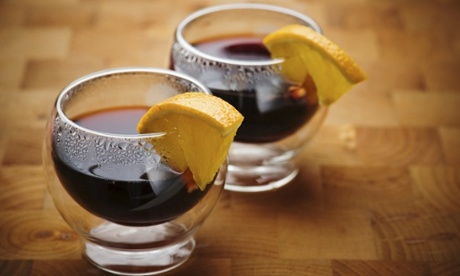
From my childhood the aroma that marked the start of Christmas was the smell of the tree when it went up. This smell is mostly due to another terpene known as pinene. However, pinene is not present in most modern wines except Greek retsina, where it forms a ghostly memory of the resin used as a wine preservative and to seal ancient earthenware containers. Luckily for us alpha-terpineol is present in pine and most wines, particularly those from Muscat and Riesling grapes. It has a lovely pine-like smell with hints of citrus.
Another classic Christmas smell is the rich combination of cinnamon and cloves. One of the key smell compounds for both of these spices is eugenol. Unlike limonene and pinene this generally comes not from the wine itself but from the oak barrels the wine is aged in. Oak is used in wine making to fine-tune the colour, flavour, tannin profile and texture of both red and white wine.
The overindulgence of Christmas is often typified by the presence of lots of butter in food. Diacetyl has a buttery odour and is present in cultured butter. This smell is often present in wines that have undergone secondary malolactic bacterial fermentation. This reduces acidity and tartness making the wines softer. Many red and white wines now undergo this process.
In creating your own smell image of Christmas you should pick the wine that most closely echoes your favourite Christmas aromas. I was surprised when the above considerations pushed me to choose a white wine over my normally preferred red, and even more surprised when I found I loved it! If you can't make up your mind which wine to use, Smoking Bishop (Dickens's favourite, remember) was made with Port wine, which was relatively cheap at the time. Otherwise, to paraphrase something Sigmund Freud most likely never said, "Sometimes, a wine is just a wine."
Step 2 - Choosing your additives
The Christmas chemicals listed above give you a palette to work from when selecting the ingredients to add to your chosen wine. The idea of matching flavour compounds - food pairing - has been used in molecular gastronomy for a decade or more. The idea is that if key aroma compounds are shared between two ingredients then they might complement each other. For example, the Firmenich scientist Francois Benzi found that the aromatic compound indole was present in both jasmine and pork liver and so matched these ingredients to create a new and interesting dish. (Delicious, you might think ... though indole in high concentrations has a faecal, rather than a foodie odour.) Much of western cooking has for centuries unknowingly combined ingredients that share flavour compounds (for example, eggs and butter), unlike East Asian cuisine which combines ingredients that lack shared compounds (for example, garlic and soy sauce).
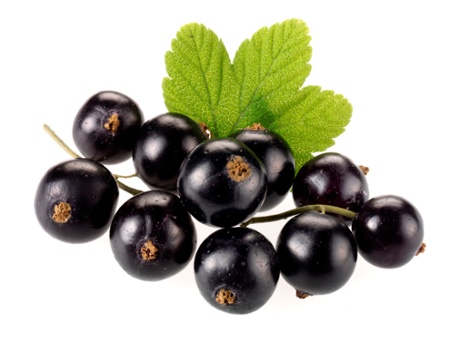
So to match our Christmas chemicals we could add cinnamon and cloves to give us eugenol and alpha-terpineol (pine trees not being an ideal ingredient in beverages). We could get limonene from lemons, oranges, nutmeg or ginger. We could add raspberry, strawberry or lavender for their diacetyl. However, there is one food that reportedly contains all of these compounds: blackcurrant. So I am going to add blackcurrant to my wine to help create my Christmas smell image in a glass. I am also keeping cinnamon and cloves in the mix for a bit of tradition and visual effect.
The recipe
1 bottle of white chardonnay wine (oaked if possible) or another wine of your choice
10-15cm cinnamon stick
5-10 cloves
50-100ml creme de cassis
Honey to taste.
Step 3 - Add the wine and spices to a pan and heat for 30mins, lid on
Heating spices and wine together is a balance of two processes: diffusion and evaporation. When the spices hit the wine the various flavour compounds will start to leech into the liquid. Some will be more soluble in alcohol, some in water, and others will have very low solubility in either and may float to the surface. The longer you leave the spices in the pan, the greater the diffusion of flavours. However, there will also be a greater loss of flavours and alcohol through evaporation; hence we keep the lid on and try not to let it boil.
Breaking up spices into smaller pieces or grinding them will speed up the diffusion of their chemicals into the solution but they may also lead to a gritty wine - I prefer to leave them whole.
Step 4 - Add the rest of the ingredients to taste
We have carefully picked the most evocative ingredients, now we need to balance the flavours. If we had the correct equipment and a lot of time, we could find an objective chemical composition for the perfect mulled wine. But even then, it would be a subjective decision. A qualified wine taster may be able to accurately perceive many of the more objective physicochemical properties of a wine, such as acidity. They might even define a "great" wine based on some of these properties. However, for me wine tasting is a subjective activity and so I am going to rely on personal preference to round out my mulled wine's smell image.
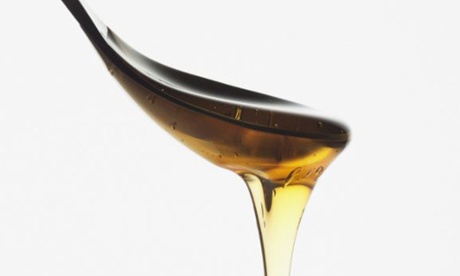
I add honey and blackcurrant, tasting the mixture regularly in search of a good balance. I use creme de cassis to provide blackcurrant flavours and to help reverse any reduction in the alcohol concentration of the mulled wine during heating.
For sweetness I love the taste of the traditional wine sweetener, honey, though sugar works just as well. The ancient Greeks and Romans used honey and seem to have preferred their wine much sweeter than might be deemed fashionable today.
Step 5 - Pour and drink
The physicist Richard Feynman once wrote, "If we look at a glass of wine closely enough we see the entire universe." As you pour your wine you can imagine the many hundreds of chemical compounds flowing into the glass (or mug if you prefer): chemicals constructed from the simplest materials of the Earth itself, water, rock, air and light; grapes, nature's candy, packaged in bright colours and test-marketed over millions of years of natural selection, then transformed by man and microbe into wine. Now we have fine-tuned those ingredients and brought seemingly disparate chemicals together to create a smell image, the festive flavour of Yuletide.
As the warm Christmassy concoction enters your mouth let it wash around and discover what sensations it triggers. Can you taste the tangerines despite there being none present? Have you managed to rekindle the emotions of childhood Christmases? If not, don't despair. As the heat of the mulled wine stimulates blood supply to the mucus membranes in the mouth and throat, the alcohol will be absorbed more quickly into the bloodstream and you'll soon forget to care. Because as Feynman also wisely said, "... not forgetting ultimately what wine is for, let it give us one more final pleasure; drink it and forget it all!"
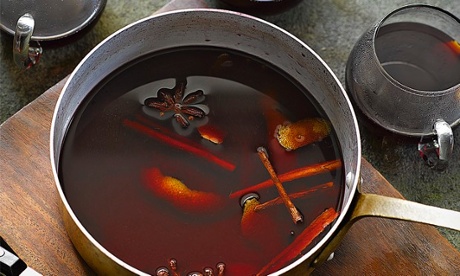
The smell of Christmas. Cheers!Photograph: Colin Campbell for the Guardian
Create a mulled wine that resembles your 'smell image' of Christmas and you will bring back some of those happy festive emotions as you make and drink it. Photograph: Tom Merton/Getty Images/OJO Images RF



